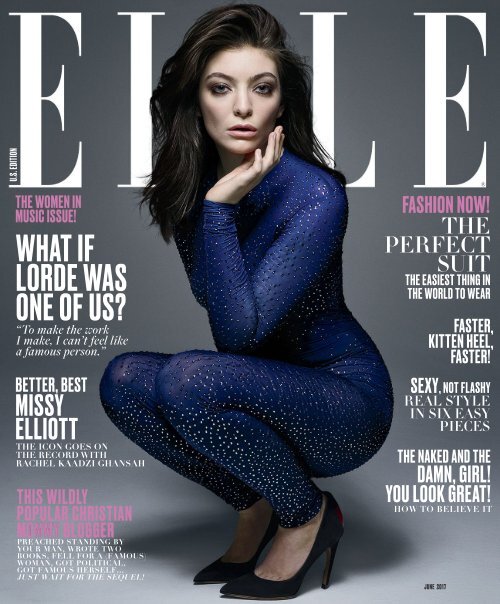Increases Firmness & Elasticity
SINGAPORE – A historic outing at the Olympics for Singapore equestrienne Caroline Chew ended in heartbreak as she was eliminated from the dressage individual qualification competition on Sunday. On June 30, Mboma sent notice to those seeking gold in Tokyo with a blistering 48.54 at a meet in Bydgoszcz, Poland. Minecraft pe mansion map download. She broke her own world junior record, ran the seventh fastest 400-meter by a. The viral clip has been widely viewed by people on Reddit and has been upvoted by 90 per cent of the people. The comments section is filled with love and appreciation for her. A person revealed that very recently Richardson lost her biological mother and it was her dream that she becomes an Olympian. The u/noofyboi community on Reddit. Reddit gives you the best of the internet in one place. LF Tokyo Heartbreak SERUM BANK (self.DrumkitTrading) submitted 2. 🎹 http://studiosounds.com/shop/tokyo-heartbreak/.
Provides deep hydration with Super Hyaluronic Acid™ that works in synergy with Retinol Complex and Collagen to repair and fight the signs of aging. Formulated to help increase skin’s firmness and elasticity, and reduce the appearance of fine lines and wrinkles. This serum-like hydrator absorbs instantly so skin feels velvety smooth, tighter, and renewed.
Size: 1.7 fl. oz.
.jpg)
Details
- Lightweight, unique serum-like formula
- Use alone or followed by a heavier moisturizer
- Non-greasy, can be applied over makeup
- Free from fragrance, parabens, dyes, and mineral oil
- Suitable for all skin types
For Optimal Results
- Use anytime skin needs a moisture boost.
- Apply a few drops to palms and pat onto face and neck until thoroughly absorbed.
Ingredients
- Super Hyaluronic Acid™: Proprietary combination of 3 types of Hyaluronic Acid. Powerful hydrator and skin plumper that provides multi-layer, long-lasting moisture to restore and strengthen skin’s natural hydrating levels.
- Retinol Complex: Boosts elastin and collagen production to perfect the skin’s appearance and help reverse the effects of aging.
- Beta-carotene: A supplement to the Retinol Complex and antioxidant that helps reduce skin irritation and increase cell turnover.
- Collagen: Provides a basic foundation to the skin, helping to maintain and improve skin texture, structure and appearance, reducing the look of fine lines and wrinkles.
- Collaplus G: A proprietary soy peptide that helps promote skin renewal and boost collagen and hyaluronic acid production.
water, butylene glycol, glycerin, beta-carotene, BHT, caprylic/capric triglyceride, carbomer homopolymer, dipropylene glycol, disodium EDTA, helianthus annuus (sunflower) seed oil, hydrolyzed collagen (marine), hydrolyzed hyaluronic acid, hydrolyzed soy protein, hydroxyethylcellulose, iodopropynyl butylcarbamate, limnanthes alba (meadowfoam) seed oil, methylisothiazolinone, PEG-20 sorbitan isostearate, PPG-10 methyl glucose ether, retinyl palmitate, sodium acetylated hyaluronate, sodium chloride, sodium hyaluronate, tocopherol, triethanolamine, zea mays (corn) oil.
Recommended Regimen for Ageless Skin
While I was writing a newspaper article on performances of various potential Covid-19 vaccines from different organisations, my wife, who is neither a statistician nor a vaccine expert, asked me the meaning of 90% efficacy of a vaccine. And I suddenly realised that such figures for potential vaccines under trial are never very clear to common people unless their implications are clearly illustrated.

In fact, different pharmaceutical companies are now coming out with the success stories of their potential vaccines, and the efficacy rates of these vaccines are reported to be high – 70%, 90%, 95%, and so on.
Here is how we can understand vaccine efficacy.
Phase III trial
Vaccines are usually approved on the basis of results from three stages of clinical trials. The trials aim to assess short-term safety, ability to generate an immune response, and efficacy. Short-term safety is usually judged in early phases.
Phase III trial, which is often the most elaborate one, investigates the efficacy of the vaccine under trial – usually in comparison to a placebo, which maybe a similar-looking injection having no medical effect. In a phase III trial, often thousands of people are given the vaccine or a placebo, and then these people are monitored over several months to see whether the people receiving the vaccine get infected at a lower rate than people who get the placebo, on average.
Thus, the performance of the vaccinated group is compared to that of the unvaccinated group. Phase III is a full-scale evaluation of efficacy, and it provides an opportunity to monitor for some safety issues which cannot be done in earlier phases. ‘Vaccine efficacy’ is defined to measure whether the vaccine is able to prevent the disease significantly or not, and if so, to what extent.
The mathematical deduction of protective vaccine efficacy was proposed by M Greenwood and GU Yule in a research article published in the Proceedings of the Royal Society of Medicine in 1915, wherestatistics of antityphoid and anti-cholera inoculations were introduced and interpretated.
Risk ratio
Vaccine efficacy is expressed as a proportionate reduction in disease attack rate, AR, between the unvaccinated, ARU, and vaccinated, ARV, groups under the phase III trial.
ARV is just the proportion of individuals within the vaccinated group who got infected within the study period. Similarly, ARU is the proportion of infected within the unvaccinated group.
The ratio of ARV to ARU is called the risk ratio, RR. A lower value of RR clearly indicates better performance of the potential vaccine. When both the vaccinated and unvaccinated groups have, more or less, equal number of individuals, RR is the simple ratio of the number of infected in the vaccine group to that in the placebo group. And, one minus RR, expressed in percentage, is called the “Vaccine Efficacy”.
Clearly, higher the value of vaccine efficacy, the better the performance of the potential vaccine. Thus, a 90% efficacy (ie 10% RR) means that the proportion of infection in the vaccinated group is about one-tenth of the proportion of infection in the placebo group.
Vaccine efficacy
Well, my wife is satisfied with the answer. And the reported efficacy values of the potential vaccines are also quite high.
The Moderna trial involved 30,000 people, and more than 43,538 people have been enrolled in the Pfizer/BioNTech vaccine trial – approximately half receiving the vaccine, and the remaining a “placebo”, in each trial. Of the first 95 to develop Covid-19 symptoms in the Moderna trial, only five were in the vaccine group, and the remaining 90 were in the placebo group. Pc repair.
Thus, the RR for Moderna vaccine up to this point of time is 5/90, and vaccine efficacy is (1 – 5/90), which is 94.44%. Similarly, of the 170 cases of the Pfizer trial, 162 were in the placebo group, while 8 were in the vaccine group. The vaccine efficacy of the Pfizer vaccine is (1 – 8/162), which is 95.06%.
The Oxford-AstraZeneca vaccine candidate appeared to be 90% and 62% effective for the two dose regimens having 2,741 and 8,895 individuals in the two groups, respectively. The average efficacy was announced to be 70%, the early analysis being based on 131 symptomatic Covid-19 cases that had turned up in study participants. But we still do not know how many cases were found in each group of participants across the vaccined and placebo groups, and also the division among the two dose regimes.
Short-term data
But, we should keep in mind that the vaccine efficacies are based on short-term data only. Both the Modera and Pfizer trials are found to be nearly 95% effective to protect Covid-19 in the short-term, although both trials are still taking place and the final numbers could change.


For example, if among the next 100 infections 98 are from placebo group and 2 from the vaccine group, the efficacy of Moderna vaccine would be enhanced to [1 – (5+2)/(90+95)], i.e. 96.28%. However, if the vaccine effect wanes in course of time and 70 and 30 of the next 100 infections are from the placebo and vaccine groups, respectively, the overall efficacy would become [1 – (5+30)/(90+70)], i.e. 78.13%. However, if the next 100 infections occur equally within the two groups, the resultant efficacy will be only 60.71%.
Thus, we should keep in mind that vaccine efficacy is just a statistical measurement of short-term performance of the vaccine. It cannot guarantee the durability of the vaccine beyond the time frame of experimentation, which is only a few months in these cases.
Asper the 2020 ‘Guidance for Industry’ of the US Food and Drug Administrationfor ‘Development and Licensure of Vaccines to Prevent COVID-19’, all phase III trial participants are expected to be monitored for at least 1 year. The recruitment of phase III for the Moderna vaccine was done in April and May, and that for Pfizer vaccine began in end-July. Thus, these all are short-term efficacy. Seal maker crack serial numbers.
There is a widespread speculation that the SARS-CoV-2 antibodies, which would make one immune to Covid-19, may not last beyond a few months. This is supported by different peer-reviewed articles in various journals as well. Thus, it is still not very clear how long a vaccine would provide protection against the disease. Whatever be the case, vaccine efficacy might drastically change if the study individuals are monitored for another few months, at least. Let’s just hope for the best.
Atanu Biswas is Professor of statistics at the Indian Statistical Institute, Kolkata.
Tokyo Heartbreak Serum Reddit Gif
Support our journalism by contributing to Scroll Ground Reporting Fund. We welcome your comments at letters@scroll.in.Share your perspective on this article with a post on ScrollStack, and send it to your followers.